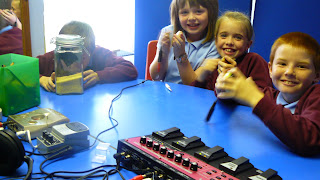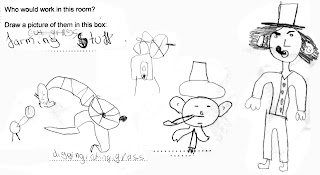On Thursday, after two months of research and workshops, we finally began recording for the finished Tour. First up was Sue Halsey, at the Parsonage Room, who described how her grandfather, a local train driver, had saved the life of a boy who was asleep on the tracks, and went on to reminisce on her playful cousins who used to leave her down in her grandmother's shop cellar with the dissected pigs maturing from the beams above - recalling the smell above anything else.
Then, after too much traffic noise outside, we moved to take advantage of the acoustics at the Methodist Hall to record Margaret. She produced a fantastic piece of creative writing about the system she used to name her cattle. Below is a short extract (we will be publishing all stories on the blog after the festival):
"Each cow had a name with the prefix STICKLE- like a surname but it came first, as in STICKLE Kim, STICKLE Hawthorn, STICKLE Daisybell - who failed to recover from a twisted stomach operation"
Through this short text Margaret has given us a glimpse into a world that seems completely alien to us, non farmers.
Then came Vera to read her text which she had re-written three times. It was a condensed history of her working life, were she went from shop assistant to manager. Vera painted an amusing picture of a co-op manager she remembered:
"We got a different manager, not for the better. He came from lakeside and would roll up in a taxi about 11.30 and go in the back and fry himself some bacon and egg...It was funny when he came, he had his gloves and was all dressed up and had a long umbrella. Nobody would've thought he was coming to Broughton co-op."
And so it was the turn of Graham George (a retired policeman, now a member of the parish council, Amateur Dramatics Society, part-time post office worker and unofficial 'Caretaker of the Square'). Graham, put his dramatic skills to good use to read a text we had created about the invention of the X-ray which will be played outside the old Cottage Hospital were the son of Dr Fawcett, an early pioneer of radiology, lived.
Many thanks to these four participants for their enthusiasm in the project and who all turned up on time and did more than we had anticipated - it's a great start to the Tour!



































